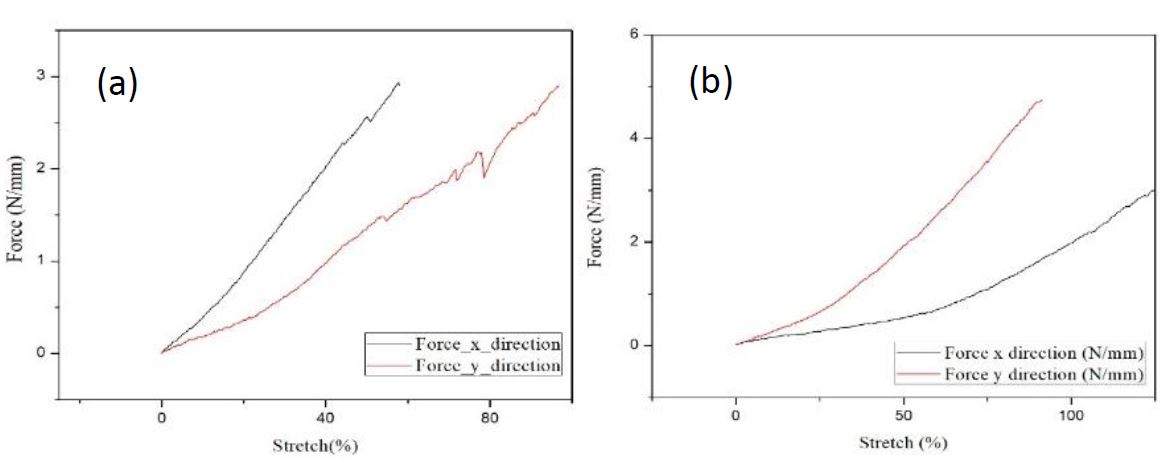When an abdominal hernia occurs, major surgery is often required to repair it and maintain the intact lining of the abdominal sac. However, the rate of surgical failure of this procedure is high along with a hernia recurrence rate of 24-50%. Prosthetic biomaterials providing reinforcement to the repair can reduce the hernia recurrence rate down to 4-24%, though there are new factors to consider such as biomechanical compatibility and material mechanical behavior. Dr. Georgina Carbajal de la Torre and her team from the Universidad Michoacana de San Nicolas de Hidalgo analyzed in this paper mechanical properties of materials used in abdominal wall repair and proposed a new mechanical model and methodology that more adequately describes such materials.
Using the CellScale UniVert, 2 commercial meshes underwent tension tests in longitudinal and transversal directions as shown above. Force-strain graphs were generated (shown below), and data was fitted into a five-parameter Mooney-Rivlin model. Further simulation can be obtained with finite element analysis.

The knowledge gained from this research can go toward proper selection of synthetic meshes for hernia repair based on a finer understanding of their mechanical behavior.
To read the full article, click here: https://doi.org/10.1557/adv.2019.399
To read more about Dr. Carbajal de la Torre’s research, click here: http://bit.ly/36ZqvMI
To read about a new testing method for viscoelasticity of biomaterials, click here.








